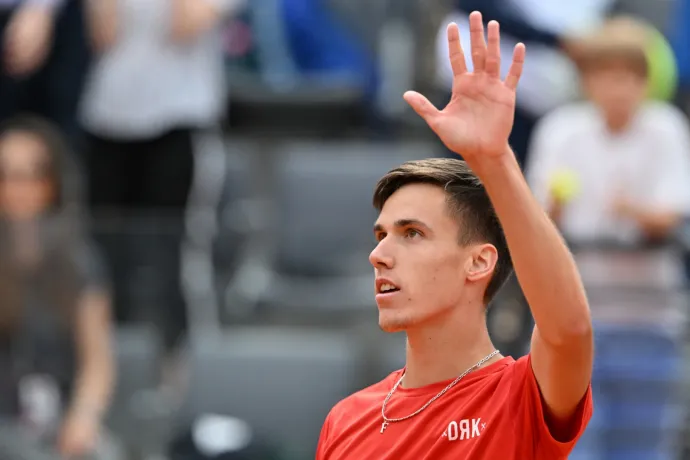
Following Sándor Noszály, Attila Sávolt, Márton Fucsovics and Attila Balázs, Fábián Marozsán recently joined the elite top 100 in the world ranking of men's tennis, ranking 91st (currently 95th).
Those listed above are the only Hungarian players to have reached the coveted top 100 and stayed there for longer or shorter periods over the past 30 years. Fucsovics has been holding his place the most steadily. The top 100 is an important psychological limit because it guarantees a place in the main draw at Grand Slam tournaments and it can also provide a financial boost to a tennis player's international career.
Fucsovics and Balázs both reached this threshold in February 2020, and now Fucsovics and Marozsán are both members of this elite. If we consider that prior to 2020, the last year in which two Hungarian players (Balázs Taróczy and Zoltán Kuhárszky) reached the top 100 was 1985 it becomes obvious that we are talking about remarkable success.

Fucsovics's recent stellar performance in Stuttgart – he was beaten in the semi-finals by the American Tiafoe, who moved up to tenth place – has moved him up 20 places to 66th. Marozsán won a minor tournament in Italy, playing with confidence throughout. In Perugia, he generally took care of his opponents in two sets, carrying the pressure of being a favourite with ease. This moved him up 22 places to a record 91st place at the moment, which is his best yet. Marozsán was the one who caused a world sensation in May, defeating world number one Carlos Alcaraz to advance in Rome.
And why else is this a big deal?
Neither the Poles, Slovaks nor the Czechs currently have two top 100 players, although in the past this was often the case. Like Hungary, Austria and Switzerland have two, because former world number one Stan Wavrinka is still holding his own. The Croatians have two, with Marin Cilic barely holding on in the top 100, down 35 places from his previous best. The Swedes, where Stefan Edberg and Mats Wilander paved the way for generations, have now been relegated to the background, with one player (Mikael Ymer) in the 100, which is thought-provoking because the Finns, for example, have a player among the best. Meanwhile, Romania has also disappeared altogether.
Hungary's progress is also remarkable because, according to the European federation, there are more than 4 million tennis players on the continent alone, all of whom are naturally eager to be in the top 100.
Serbia is on a very different level in the region, with Novak Djokovic reclaiming the top spot in the rankings with victory at Roland Garros, and Kecmanović and Lajović are firmly situated among the top 50. And then there's László Györe (Laslo Djere), the ethnic Hungarian from the town of Senta.
According to the vision of professional director Attila Sávolt, there could be three Hungarians in the 100 in the near future, because Zsombor Piros, who won the juniors competition at the Australian Open in 2017, is currently ranked 123rd and is only 23 years old. If he avoids injury, he could get there too – although it's not easy to make progress at this age – which would be another step up for Hungarian tennis.
Among the women, Panna Udvardy is still the highest ranked Hungarian player, moving up one place to 84th, while Anna Bondár is 106th, down one place, and Dalma Gálfi is 132nd.
For more quick, accurate and impartial news from and about Hungary, subscribe to the Telex English newsletter!